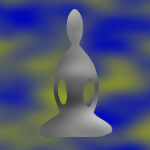January 27 – Seven positive qualities (part 2)
Dear Friends, I’m on retreat until Tuesday afternoon, but I’ve queued up some emails to keep you inspired while I’m away. Yesterday, we looked at the first three of the seven factors: mindfulness, investigation, and energy. Today, we’ll look at the next three: joy, tranquility, and concentration. Joy As our mindfulness deepens, we investigate, and then that rouses… Read More »
